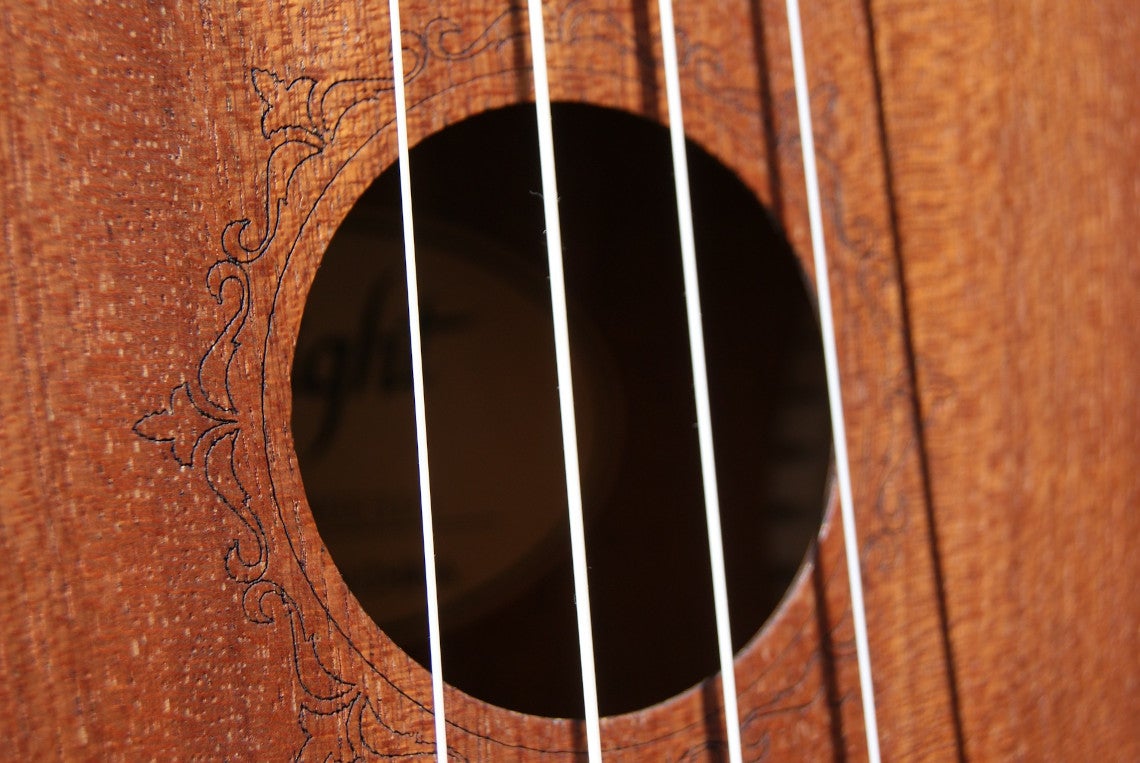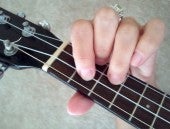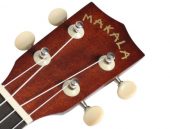5 tips to improve your tone on the ukulele
Published on Thursday 19 August 2021
The way you play your instrument has got just as much to do with the overall sound as the wood that it’s made of and the strings that it has. There are a lot of fundamental things that new players often miss when trying to find a good sound and today, guest blogger Matthew Quilliam shows us five subtle but effective ways to improve your overall tone when playing your ukulele.

#1. Find the sweet spot
One of the ways that the ukulele is unique is the fact that we don’t strum over the sound hole like we do with other fretted instruments. Instead, ukuleles are designed to be strummed or plucked around the so-called ‘sweet spot’. Typically, the ‘sweet spot’ is at or around your 12th fret, or where the neck meets the body. This area is right in the middle of the string where there is the least amount of tension, allowing it to vibrate freely and create a nice, warm tone. To find your ukulele’s sweet spot, try strumming in different areas along the strings. You should notice that the further away from the bridge, the warmer the tone because the strings are looser. Play around to find a spot that is both pleasing to listen to and comfortable to play in.
#2. Choose which finger to play with
Each of our five fingers (or digits) can give a different sound when used to strum or pluck our strings, and you can try using different fingers to create different sounds. Typically, the fleshy part of the thumb can be used to create a warm, mellow tone that sounds very traditional and also laid-back. Meanwhile, using the nail of your index finger can provide you with a harsher sound that leans into the modern ‘jangle’ that lots of ukuleles have today. The sound of the index finger is much more pronounced than the thumb when played in this way. Try experimenting with the use of different digits and see which one is more comfortable and more suitable for your songs. In fact, there’s no reason why you can’t mix it up and play with the thumb for some songs and the index finger for others. Give it a try and see how the tone affects the mood of the song.

#3. Keep a consistent volume
Not to generalise too much, but far too many ukulele players will often bash away at the strings to begin with when they are learning, creating a forceful sound that is overpowering and unpleasant at times. I’ll admit, sometimes it’s fun to do this and maybe it suits the song you’re playing, and it’s okay if it is. However, ukuleles are quiet instruments by their very nature and should be strummed or plucked at a slightly lower level. This means putting less force through your arm in order to create a sound, and what you will find is that the strings can vibrate at the level they were designed too, creating a more pleasing sound overall. Again, you can try different volumes until you find one that suits the natural tone of your particular ukulele.
#4. Maintain good posture
Refining your posture so that it’s both comfortable, safe and effective takes a long time. Good posture is great for a lot of reasons (preventing injury being the main one), but it can also mean that you can reach different parts of the instrument a lot more easily. If you found any of the previous tips physically challenging because some areas were, for example, too far away for you to reach, then it could be a sign that your posture needs improving. Good posture is enough of a topic for a separate article (watch this space!)
#5. A little vibrato?
A slightly more advanced tip to end on is one that generally only works when playing single notes in a plucking or picking style. If you have a note that sustains for a long time, try giving the string a very subtle wiggle with your fretting hand. The string should be moved parallel to the frets, back and forth, only very slightly, but enough to give it a little extra reverberation that can make the note ‘sing’ more. There’s no reason not to try, although it takes a lot of practice to get it right.
So, have any of these tips inspired you to be a better player? Which ones didn’t you realise? Let us know how you get on in the comments!
See also…
» Ukuleles
» Children’s Ukuleles
» Ukulele Strings
» Ukulele Bags & Cases
» Ukulele Stands
» Ukulele Straps
» Ukulele Books
» Ukulele Pickups
» Ukulele Parts
» Buyer’s Guide – Ukuleles
» How to Hold Each Size of Ukulele
» Ukulele Strings that Are Right for You
» Ukulele Rhythms: Learn Them Here!
» How to Tune Up & Play a Guitarlele
» Help! What Size Ukulele Should I Buy?
» Learn to Play Ukulele in 3 Easy Steps!
» How to Tune Your Ukulele
» Ukulele for guitarists: the 4 most-important chords
» The Difference Between the Ukulele, Mandolin, and Banjo
Performer, teacher, composer and author, Matthew Quilliam is a fresh new talent on the ukulele, already making a huge impression.
Matthew’s primary instrument has always been the ukulele which has allowed him to grow a life-long connection and expertise with the instrument. Over his short musical career so far, he has already achieved so much; he has contributed to many ukulele publications and performed at some leading festivals in the UK, plus more.


















No comments yet...